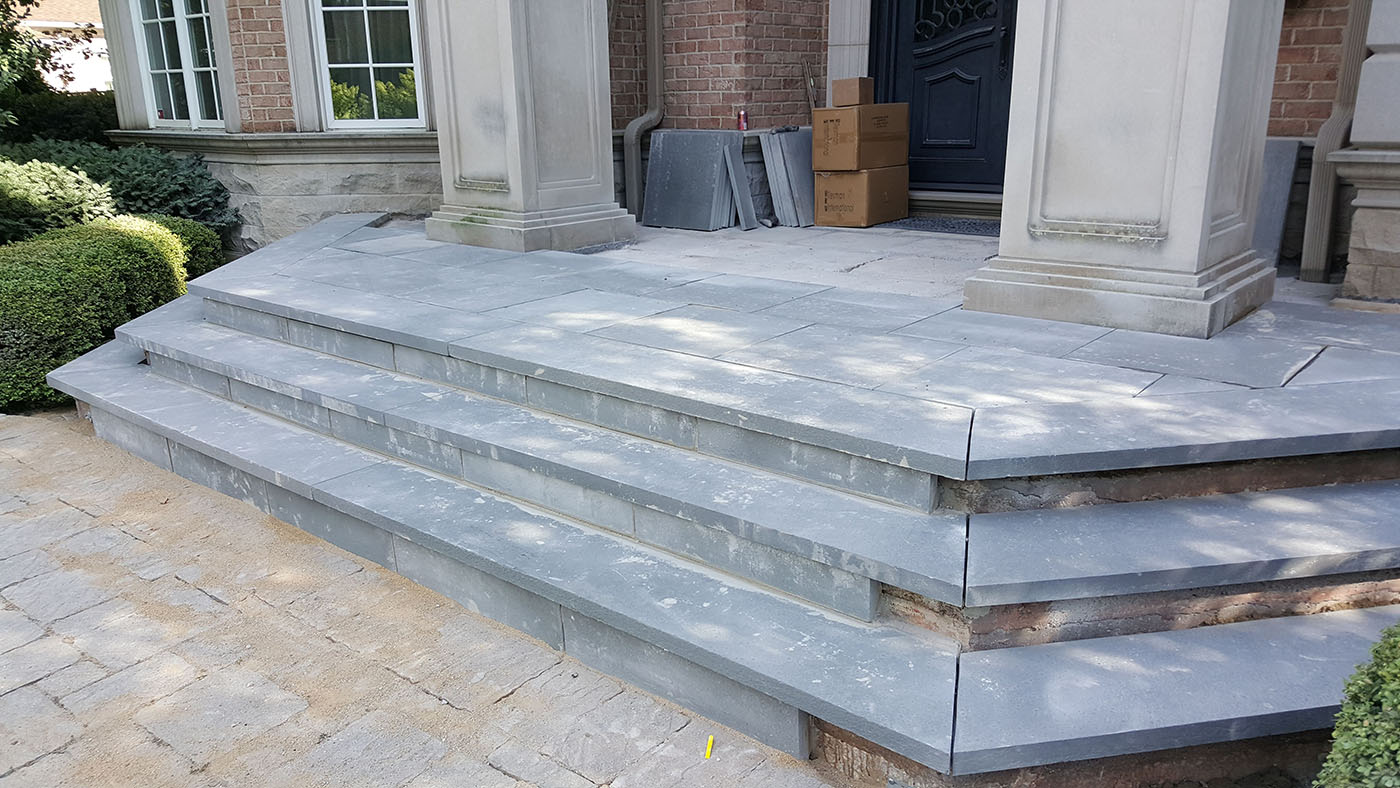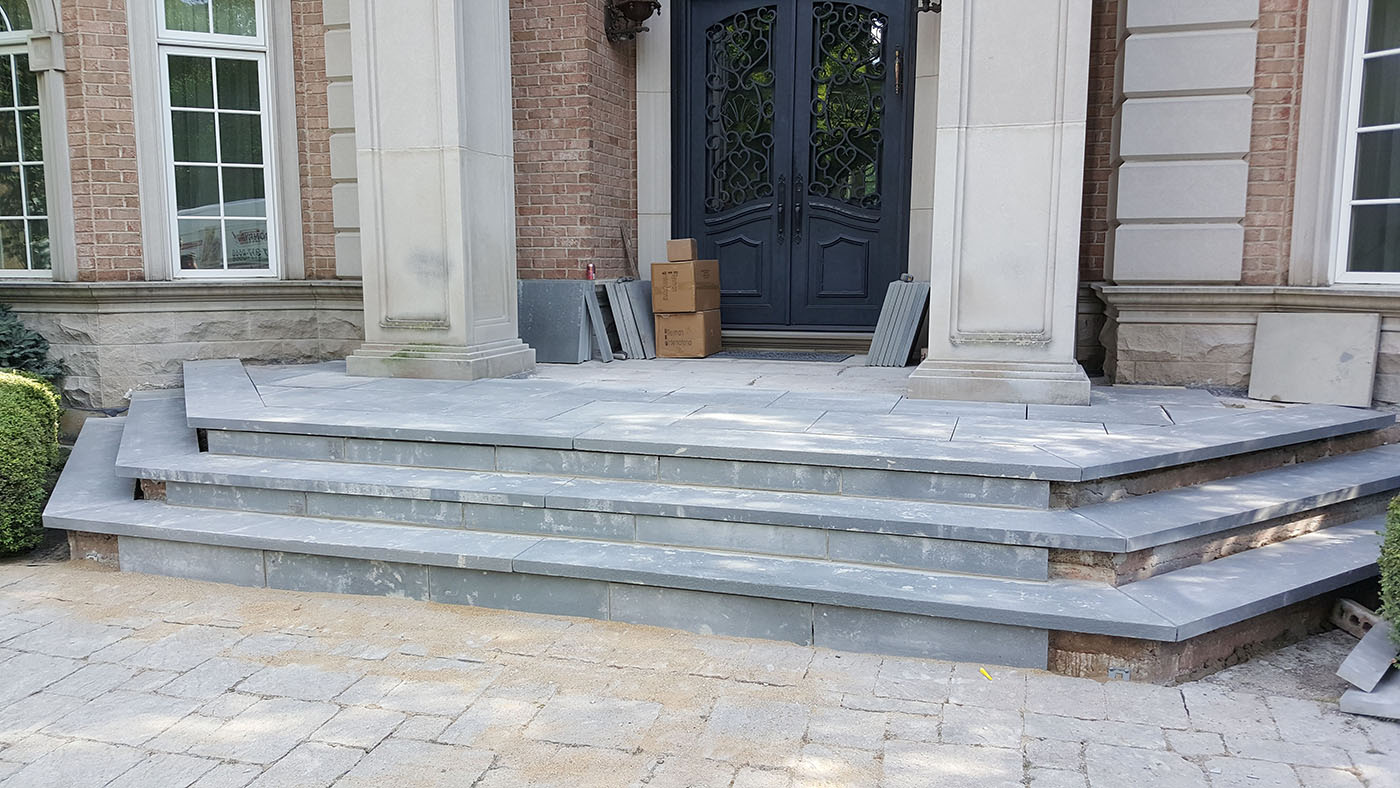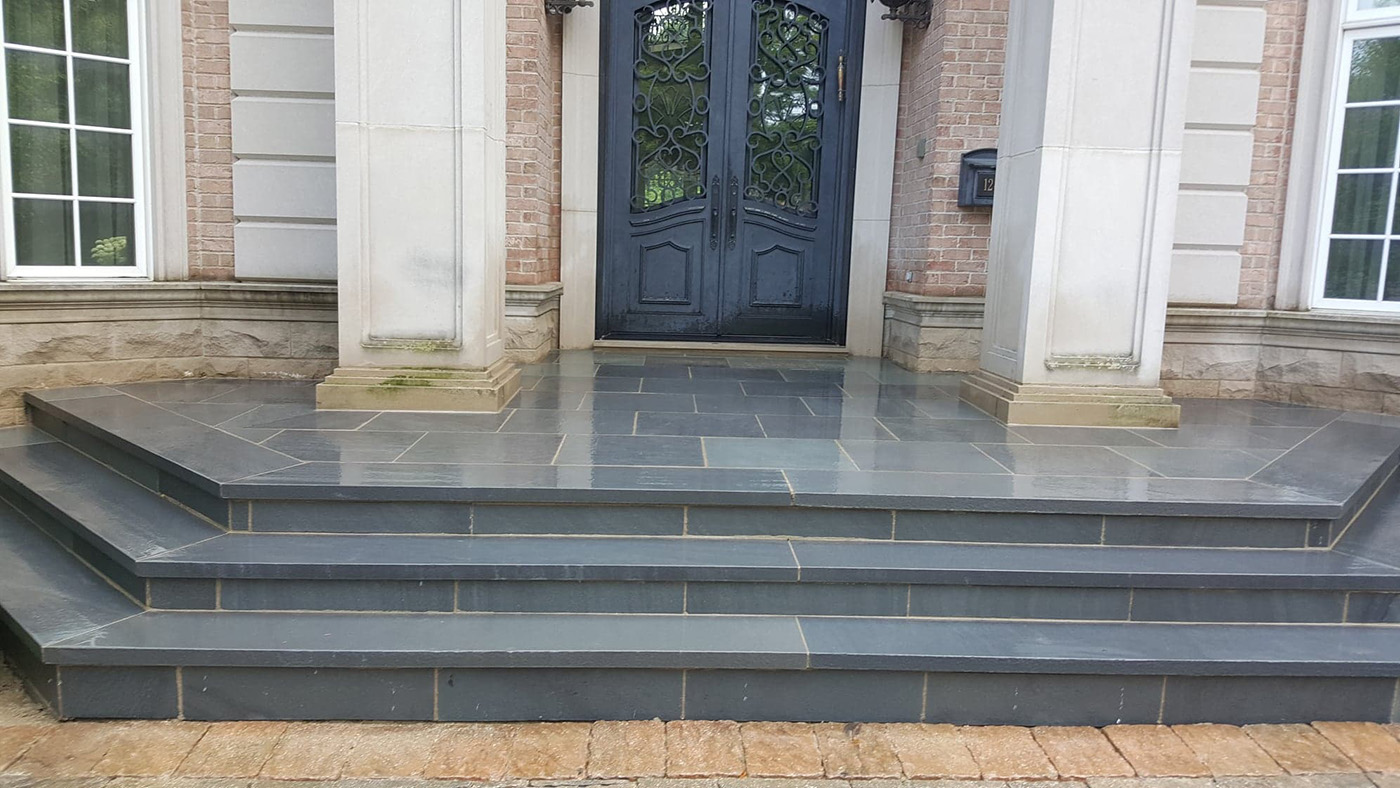Stairs Repair, Sealing and Maintenance
A well-maintained entrance can go a long way to creating that first good impression of your property.
Proper repair of stone elements can seem costly. However, this cost can easily be eclipsed by the cost of correcting deferred repairs or ignored defects. Repairs that only address problems on the surface can mask deeper issues and often allow deterioration to continue unnoticed.
In the long run, cost-effective repairs always correct the root problem first before restoring the damaged finish material. It’s important to understand the nature of the problem and the methods necessary to repair the defect to avoid complete deterioration.
There are many sources of stone deterioration. Damage occurs through weathering, the invasive action of plant growth, pollution, and dirt accumulation. Further damage can occur through erosion, as a result of movement in stone (thermal expansion/contraction), faulty or broken anchors, and even human error in design, engineering or construction.
Ongoing maintenance is essential to preserve exterior stone surfaces and to prevent future deterioration. A good maintenance program includes routine inspections to detect early signs of stone damage and joint failure. Regular washing keeps dirt and pollutants from accumulating on stone, helping prevent deterioration.
You should correctly identify stone before cleaning, because certain cleaning agents and treatments, if improperly applied, may cause or accelerate physical deterioration in stone. For that reason, it’s best to use the mildest cleaning method possible to get the job done.
It is recommended to always seal a bluestone after scrubbing it clean. Sealing is a normal process after stone installation. Sealing protects the stone from mineral stains and extends its lifespan. Your stone should be sealed at least every couple of years to keep its protective coating. To check whether your bluestone needs sealing, leave a few drops of water on the surface.
If it beads up, then it does not need sealing. If after a few minutes the water has soaked into the bluestone, then you will need to seal your stone. Deepshield™ Transparent Sealer provides an invisible natural look, whilst protecting the surface of your bluestone tiles from both water and oil based contaminants.
Pre-Sealing Preparation
1. Any surface to be sealed should be clean and looking just as you want it before sealing, as it may be near impossible to remove stains left in your bluestone before sealing without having to hone the surface of the bluestone tiles.
2. Bluestone must have no other coating such as wax or a topical sealer before Deepshield™ is applied, all coatings must be removed before sealing with a Deepshield™ sealer.
3. Acidic cleaners should not be used on bluestone as they will damage it.
4. Bluestone surface must be dry before applying any sealer.
5. You must do a test on a small, inconspicuous area of your Bluestone tiles at least 24 hours before sealing the rest of your tiles.
Conclusion
Although deterioration in bluestone is inevitable, there are ways to slow the process and prevent serious damage. Routine maintenance and inspections can reveal surface damage, displacement and joint failure that can signify more serious underlying conditions. Early detection and prompt, careful attention are the key to keep your stone entry in great shape.







